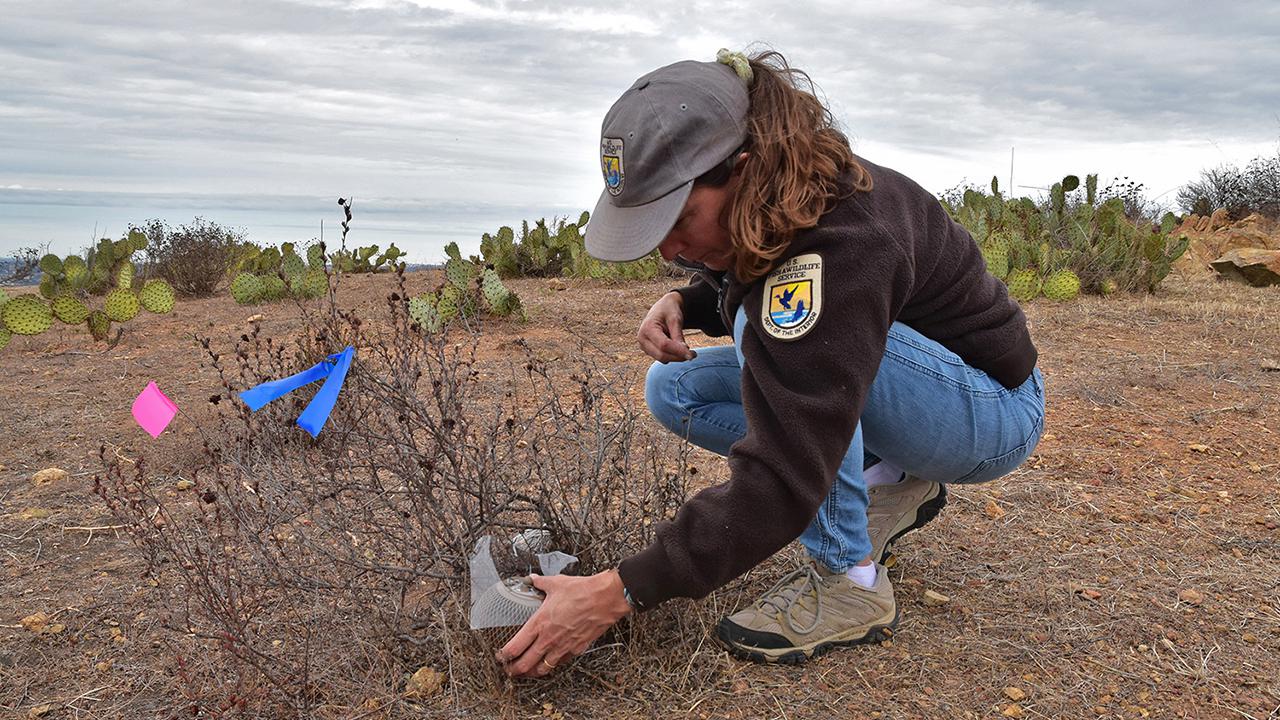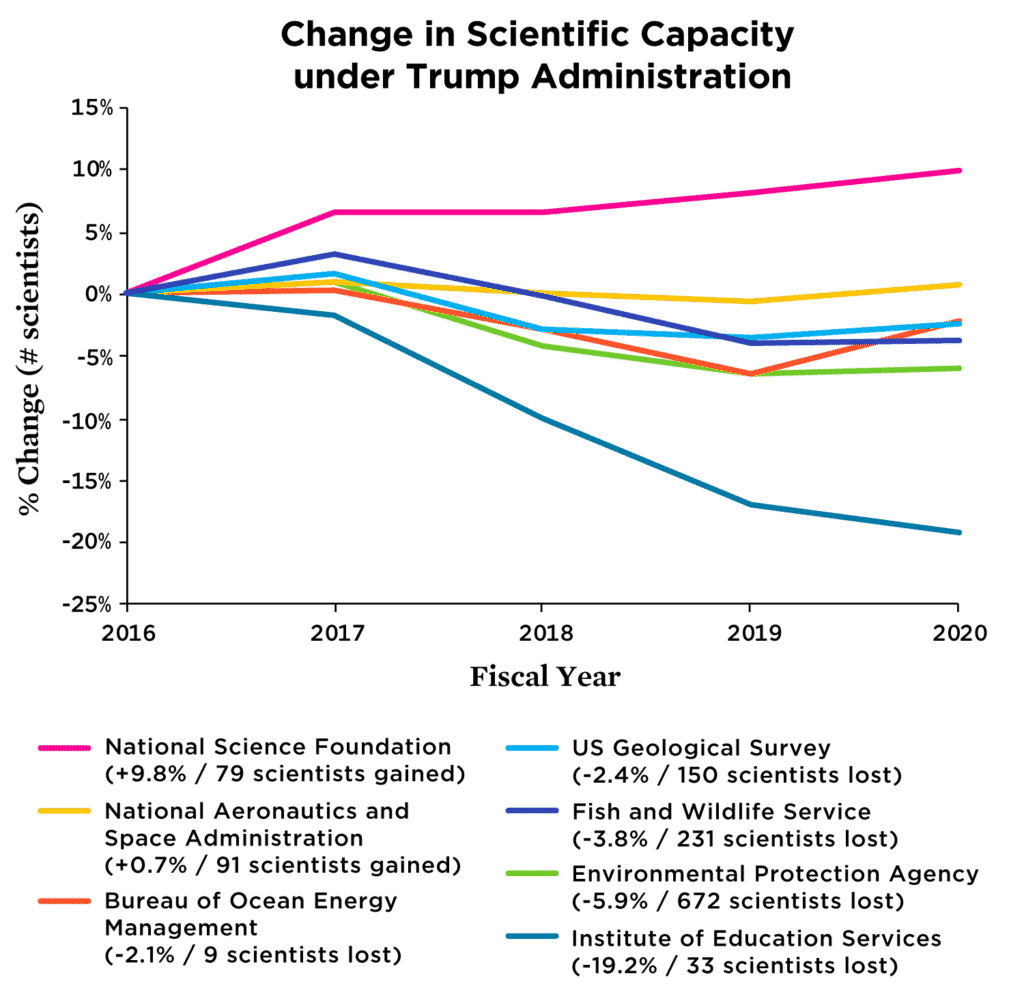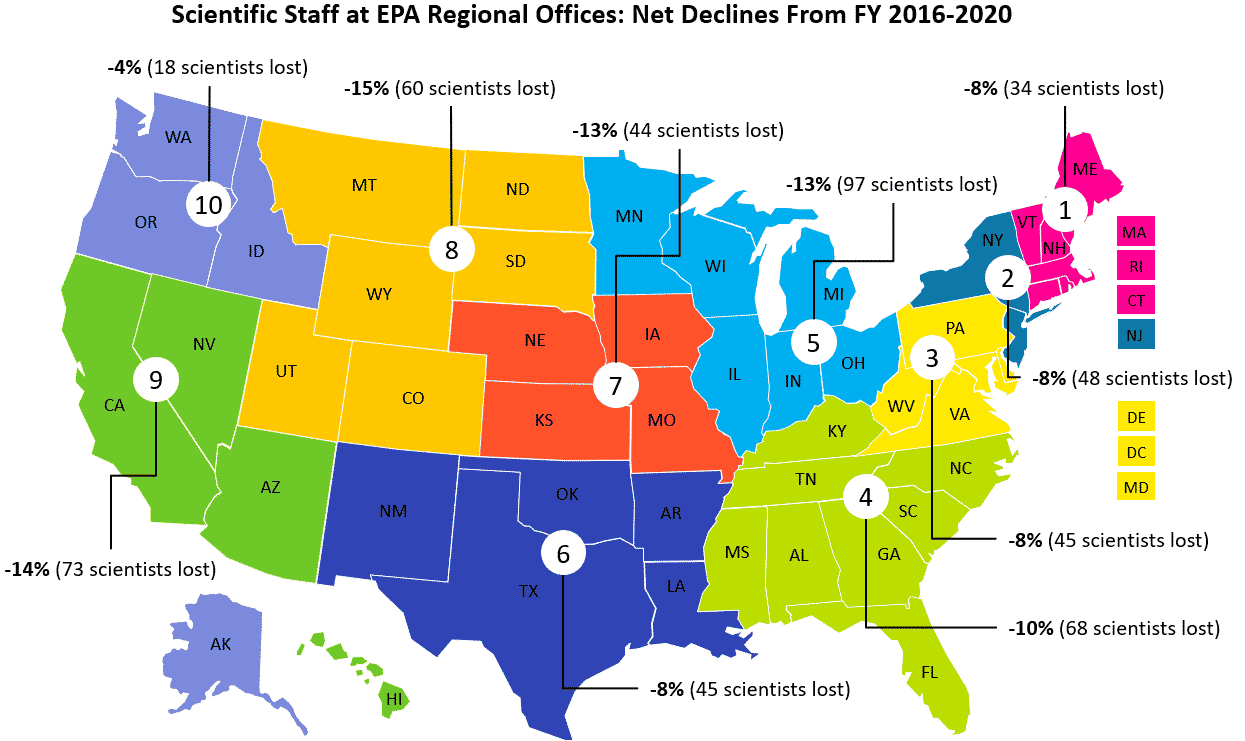
Federal Agencies Have Lost Hundreds of Scientists Since 2017. What Comes Next?

FWS biologist Susan Wynn releases an endangered butterfly in San Diego County in 2016. Joanna Gilkeson / USFWS
By Taryn MacKinney
First, the bad news: An analysis by the Union of Concerned Scientists reveals that federal agencies like the Environmental Protection Agency (EPA) and Fish and Wildlife Service (FWS) have lost hundreds of scientists since 2017. The good news: With the Biden administration already acting on its pledge to lead with science, a new day has dawned, and it’s time to get to work.
Science Under Attack
Since the birth of the National Academies of Sciences more than 150 years ago, US federal science has fueled many of the nation’s and the world’s great achievements. Federally funded scientists have mapped the human genome, created the World Wide Web, protected species from extinction, and saved countless lives through revolutionary vaccine campaigns—against polio and smallpox in years past, and today, against COVID-19.
At the heart of these triumphs stand the government scientists. Whether chemist or physician, economist or engineer, each has dedicated their career to the American public and its interests: clean air and water, safe homes, a healthy future for all.
But cracks have formed in the foundations of government science. Especially since 2017, political officials have stunted or stalled scientific research, retaliated against scientists, weakened science advisory committees, left scientific positions vacant, and undermined career staff. Some federal offices, battered by political attacks, have hemorrhaged scientific experts.
Now that the sun has set on the Trump administration, questions remain. How have federal scientists fared in the last four years? How many work in government today? And how can the Biden administration repair what was broken?
The Hunt for Numbers
To answer these questions, we needed government information and lots of it. Last autumn, we requested, via the Freedom of Information Act (FOIA), two decades of staffing records from nearly 30 federal science agencies, from the FWS to the Census Bureau.
We’re still waiting on a lot of data, but the results we have gotten are revealing. In the last four years, five of the seven agencies we analyzed collectively lost more than 1,000 scientists.

This figure shows the percent change in the number of scientists from 2016 to 2020 across seven federal agencies. Percent change is useful, but it can also mask the human scale of loss. Here’s an example: By 2019, the EPA and the Bureau of Ocean Energy Management (BOEM) had both lost 6% of their scientists compared to 2016. But the EPA is far larger than BOEM. A 6% loss is 28 scientists at BOEM — and nearly 750 scientists at the EPA. And while BOEM regained many scientists between 2019 and 2020, the EPA did not.
A Blow to Science at the EPA
The losses at the EPA weren’t random. Between 2016 and 2020, the EPA lost 550 environmental protection specialists — 1 in 4. These specialists implement air and water quality programs and track environmental law violations, tasks that the last administration spurned.

The EPA lost hundreds of highly specialized scientists, too. For example, environmental engineers work to prevent pollution, recover natural resources, and protect public health; the EPA lost 126 of them. 12 hydrologists, 22 geologists, and 18 statisticians were also lost — about a third of jobs in each category—as were 44 chemists (1 in 10), 27 ecologists (1 in 5), and 18 microbiologists (nearly 1 in 4).
Scientists nationwide felt the crunch. Many staffers in the EPA’s 10 regional offices work on the ground in communities and states to implement Agency programs. These offices are scattered across the country, and every single one lost scientific staff between 2016 and 2020, especially offices in the West, Southwest, Great Plains, and Midwest.

Staff also disappeared from programmatic offices. The Office of Research and Development (ORD), the EPA’s research powerhouse, lost 12% of its scientific staff — more than 180 people.
But wait, you ask — could these just be retirements? Good point. But if 20 people retire, we’d expect most of them to be replaced, their roles filled via a robust pipeline of early-career scientists. The result: a net loss of zero, or close to it. Instead, we’re seeing a net loss of hundreds of scientific staff, indicating that many lost employees weren’t replaced. We know from surveys that losses like these hinder vital scientific work.
Losses Beyond the EPA
Other agencies also lost experts between 2016 and 2020. The FWS lost 231 scientific staff, a nearly 4% decline. This includes a net loss of 68 wildlife biologists (about 1 in 8) and 48 staff in wildlife refuge management (about 1 in 12). The US Geological Survey, meanwhile, lost 118 hydrologists (1 in 10), 55 geologists (1 in 10), 45 wildlife biologists (1 in 4), and myriad others.
The Department of Education’s research branch, the Institute of Education Services, lost 33 scientific staff—a staggering 19 percent decline. More than half were education researchers.
BOEM — a young agency with fewer than 600 employees — steadily gained scientists through the last quarter of the Obama administration, when it reached a high of 450 scientific staff. But then this number began declining, falling to 403 in Q2 2019. As with the EPA, many of BOEM’s losses were highly specialized scientific staff, including 10 geologists (-10%) and 7 oceanographers (-29%).
On the flip side, the National Science Foundation (NSF) has gained scientific staff since 2016, continuing a trend that dates to at least 2010. NASA gained 91 scientific experts — a modest 0.7% increase. We’re heartened to see this, but don’t be fooled: all is not well in government science.
The Humans Behind the Data
These numbers validate what many civil servants have long witnessed: the decline of federal science. We’ve tracked nearly 190 attacks on science since 2017, and stories abound of scientists being ignored, defunded, and pushed out. In our 2018 survey, majorities of scientists across agencies reported seeing workforce reductions.

Dr. Joel Clement, a Senior Fellow at UCS and former Department of Interior (DOI) scientist, witnessed these attacks firsthand. At the DOI in 2017, he was reassigned from a senior scientific role to an unrelated role in an accounting office. “I believe I was retaliated against for speaking out publicly about the dangers that climate change poses to Alaska Native communities,” he said.
Dr. Clement is one of many to face these assaults. When the Department of Agriculture announced it would move its research arm from Washington, DC to Kansas City, two-thirds of Economic Research Service staff jumped ship — as did 8 in 10 staff in the National Institute of Food and Agriculture. Even when scientists stayed, they faced censorship, funding cuts, and the dissolution of crucial offices and projects. “It feels like a wholesale attack,” said Dr. Betsy Smith, a 20-year veteran of the EPA whose research on climate change was abruptly canceled in 2017.
The Path Forward
Still, have hope. Already, President Biden has given the microphone back to federal scientists like Dr. Anthony Fauci, assembled a team of qualified science advisors, and, in rejoining the Paris climate agreement, did what his predecessor never could: recognized the truth of climate change and vowed to work with the world to solve it.
But rebuilding is not enough. Federal science must be fortified. In the coming months, the Biden administration must do all it can to invite more early-career scientists into government—for example, by bolstering fellowship programs and expanding recruitment to underrepresented communities. The administration must also work to keep these vital staff, by strengthening mentorship of early-career scientists and, of course, funding them (a robust White House science and technology budget is a great start).
President Biden must also support policies that promote and protect scientists and their work. We at UCS have a lot of recommendations, and we’re thrilled to see many of them already in the administration’s latest memorandum on scientific integrity.
The United States is a divided country, cleaved by rival realities and bitter partisanship. But as our leaders brace themselves for the rocky seas ahead, science must be their lighthouse. We implore the Biden administration, and all those elected by the people, to “lead with science and truth.” The nation depends on it.
Taryn MacKinney is an investigative researcher for the Center for Science and Democracy at the Union of Concerned Scientists.
Reposted with permission from the Union of Concerned Scientists.

 233k
233k  41k
41k  Subscribe
Subscribe 